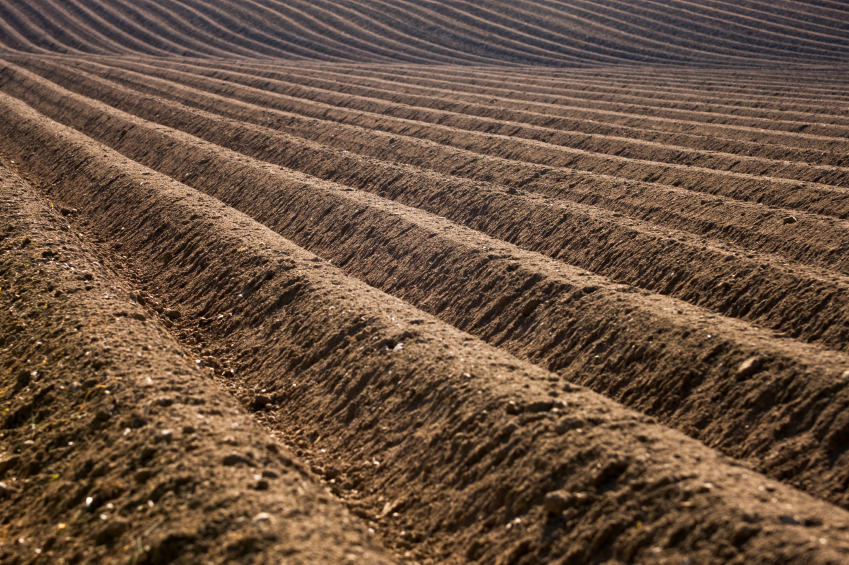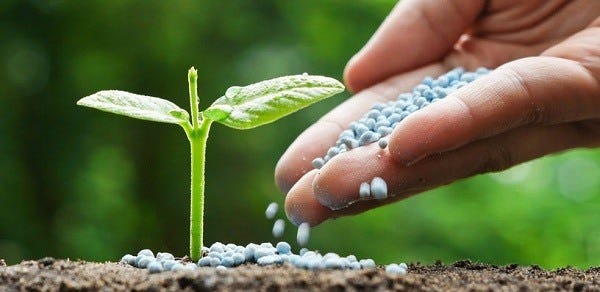FarmerDan
5 year old buck +
N, P, and K...and all the other micro elements. We've beat to depth the most complicated aspects of lime, liming materials and the impact of its application to plant production. Soil improvement? That too! And maybe we've done the same with fertilizer materials but I don't remember it - other than comments here and there when dissecting someone's soil test results. If there is this lack of "lime-like" conversation about fertilizer materials is it because we take it for granted? Or, is it soo complicated we choose not to discuss it?
Let me admit right here, right now for food plots I believe a deep dive into fertilizer isn't necessary! But let's hear what you think.
What got me thinking about this are the posts worried about loss of applied chemically sourced nitrogen (N). Think urea. My other curiosity is recommending against applying nitrogen to legumes because it encourages weed and/or unwanted grass growth. Hang on, hang on! I'll get to an explanation, but not today.
I think you can Google "nitrogen in crop production to read about the science. What value can I added (Dan asked himself)? There's a big gap between the science and putting that science into action. Then there's the credibility on both sides of that discussion. You are encouraged to question mine. I would enjoy your company!
So Nitrogen it is! I don't think there's any debate about it being the least soil persistent of the macro nutrients - and probably the micros as well. The interesting aspect is what determines that time frame. How long will the nitrogen remain in the plant rootzone? If you want to consider these things.
And then there's the price / cost problem. Every couple of decades the situation changes. It looks like we're out of the date and heading for the first turn.
As a start I'll leave it with a couple of questions about nitrogen fertilizer?
1. Dumb question but from a hunt-ability perspective why fertilizer, especially nitrogen? What's your expected outcome and if you measure it what's the measure?
2. If you use chemical fertilizers do you buy bags or bulk? Dry or liquid? Does the material source of N matter to you? Should have asked this one first - if you buy fertilizer do you know or cares about the N source?
3. On a scale of 1 to 10 where 1 equals "Don't care at all" and 10 means "I'm extremely concerned" how do you think about the timing of nitrogen applications? That wasn't worded very well so humor me, please?
Let me admit right here, right now for food plots I believe a deep dive into fertilizer isn't necessary! But let's hear what you think.
What got me thinking about this are the posts worried about loss of applied chemically sourced nitrogen (N). Think urea. My other curiosity is recommending against applying nitrogen to legumes because it encourages weed and/or unwanted grass growth. Hang on, hang on! I'll get to an explanation, but not today.
I think you can Google "nitrogen in crop production to read about the science. What value can I added (Dan asked himself)? There's a big gap between the science and putting that science into action. Then there's the credibility on both sides of that discussion. You are encouraged to question mine. I would enjoy your company!
So Nitrogen it is! I don't think there's any debate about it being the least soil persistent of the macro nutrients - and probably the micros as well. The interesting aspect is what determines that time frame. How long will the nitrogen remain in the plant rootzone? If you want to consider these things.
And then there's the price / cost problem. Every couple of decades the situation changes. It looks like we're out of the date and heading for the first turn.
As a start I'll leave it with a couple of questions about nitrogen fertilizer?
1. Dumb question but from a hunt-ability perspective why fertilizer, especially nitrogen? What's your expected outcome and if you measure it what's the measure?
2. If you use chemical fertilizers do you buy bags or bulk? Dry or liquid? Does the material source of N matter to you? Should have asked this one first - if you buy fertilizer do you know or cares about the N source?
3. On a scale of 1 to 10 where 1 equals "Don't care at all" and 10 means "I'm extremely concerned" how do you think about the timing of nitrogen applications? That wasn't worded very well so humor me, please?



